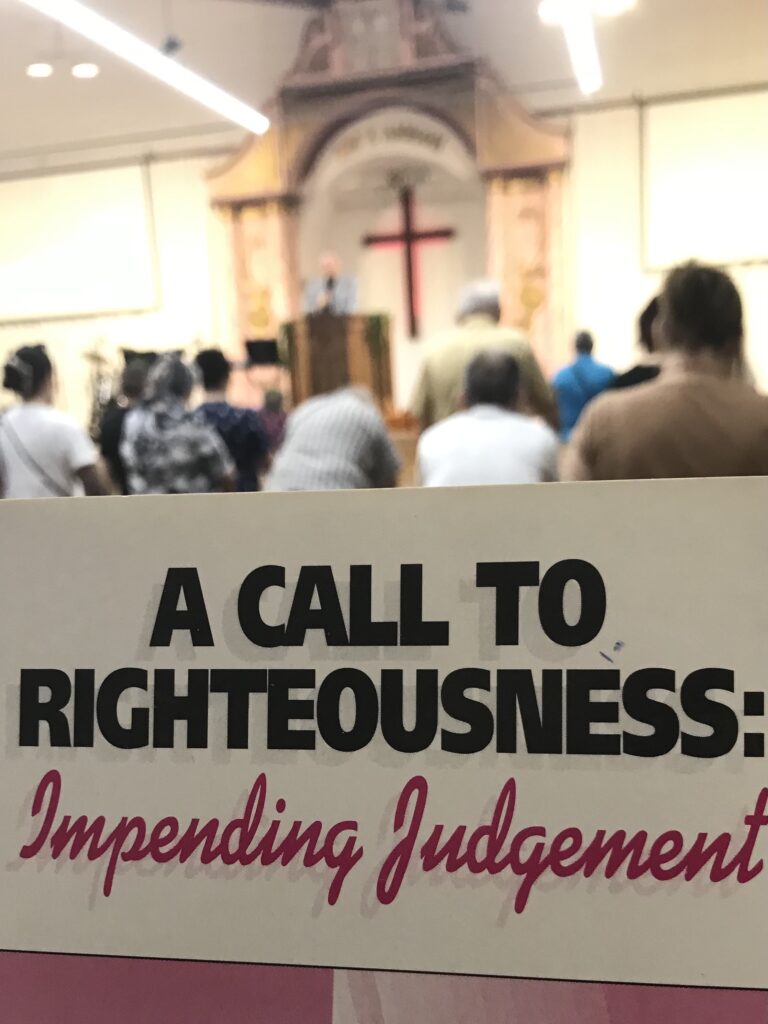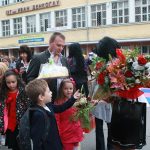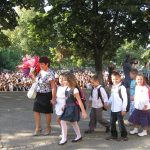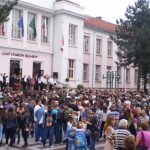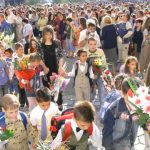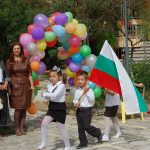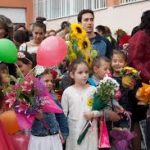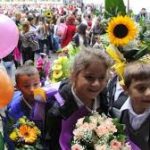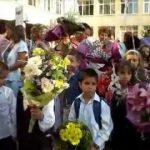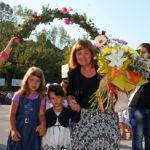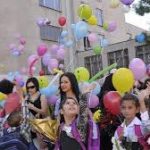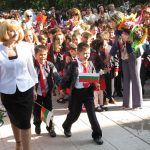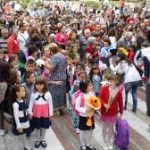Reflections on a 200-day Revival
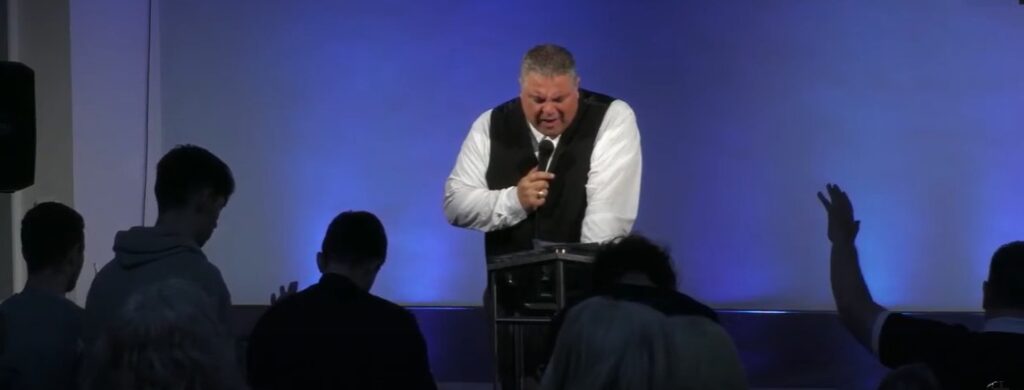
- Creative developing of fasting, prayer and giving of alms, all commanded by Jesus Himself as a regular expression of our faith (Gr. оταν = when you pray, fast, give), is the prerequisite for every Spirit-led revival. On the third day of our 10-day fasting, God used a child to revive our dead Volvo, which no mechanic in a radius of 200 miles could crank for over 6 months.
- The church that forced-left the building during the pandemic, has now returned to multimillion-dollar buildings where God did not choose to start a 200-day Revival. And even when He did, the move was shut down for lack of parking space or nightly supervision. In all actuality, a church building is a result of a revival, its finish and its end. An association with a place, address or location is a sign of its centralized settlement. It was the forced getting-out of a church building (as in Acts 7) that caused the Great Azusa Revival to emerge as a grass-root movement engraved in the streets of LA.
- Revival must emerge from the Desire and Will of God in order to be supernaturally visited by the Power of His Glory! It cannot be approached as a man-made multiplication initiative, be it local, national or globally dimensioned. It is not a project to involve people, but a spiritual tsunami of power, authority and anointing that invites a prophetic projection of what God desires for eternity and not merely what man needs in the now.
- When the now and then align, revival sparks. When the now has lost its sight on eternity, revival is long done and gone. The remain is but a motion imitating the wave of the Spirit Who has already moved to other more receptive spiritual trenches and valleys of humbleness. It is these societal peripheries and spiritual layers that God visits first with Revival before proceeding to the center of religious life. Meaning, the Heart of God for Revival is not in a religious center. As a matter of fact, any association with external centralized governing denies God’s centrality in what the Spirit wills from His Church. A man cannot vanquish the ocean and cosmos of space!
- We can win no soul Christ has not already won at the Cross! We should not try to empty hell to fill Heaven, lest we end up in hell ourselves.
A final word to fundraisers who turn revival into a business-like know-how: Can’t buy God’s love!
On day 175 of our Revival, I drove by a building close to our ministry’s home location and it caught my eye. Newly built, large enough, specious parking, perfect location easily reachable from at least three large city regions. An ideal place to hold our large revival meetings in my human perception. Quite naturally, I stopped the car in front of the beautiful gate and began telling the Lord how great would it be to continue the revival here. My reasons were many. No need to travel hundreds of miles to just preach one time, spend the night in strange places, walk in the ankle-deep mud-covered streets of slums and ghettos just to reach a soul. They could all come here, park, gather, worship, hear the Gospel, be saved, healed and delivered. The same way we had seen already in the revival for almost 200 days in a row. My heart’s thoughts were shut down by one brief word from the Lord: I did not choose to have it THIS way…

Celebrating 16 Years of Chaplaincy on the High Seas
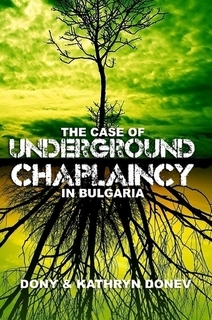 We began our literal journey of ministry on the high seas in 2009. After exploring the opportunity for several years’ prior and submitting applications to various chaplaincy organizations which dealt with such ministry, the doors finally opened for Cup and Cross.
We began our literal journey of ministry on the high seas in 2009. After exploring the opportunity for several years’ prior and submitting applications to various chaplaincy organizations which dealt with such ministry, the doors finally opened for Cup and Cross.
This search for a ministerial identity and its proper application in the real world coincided with the start of the Master’s in Chaplaincy Ministry Program which we designed for the Bulgarian Evangelical Theological Institute in Sofia around 2008-2009. The long standing relationships with professors, active military chaplains from various fields and countries, and the wisdom of several Generals in the field helped us calibrate our ministry focus with what is needed by real people in the real world.
The new fad “to be real” is not enough in a realistic ministry setting. When 25ft. high storm waves beat the aft and the ship is thrown towards the dark wall of ocean waters ahead, one cannot help but “to be real” and depend on a very real and skilled crew. A captain alone cannot run the boat through a storm even if all systems are reported working. It is the crew deep down in the engine room and making its way on the slippery deck that makes it all happen.
The Crew. Some of them have not seen their families for months or even a year at times. They struggle with the same fears and anxieties as the rest of us. Except, while the rest of us can hold on to something for dear life, the crew is obligated by duty to continue to serve and move the boat ahead. The little chapel on the top deck becomes a passage to a lagoon past the riffs of stormy life where stories are shared, prayers are lifted up together and human lives are reclaimed anew for Heaven.
We have found these nontraditional paths of travel and ministry yielding the most unique encounters and connections for Kingdom growth. Our family is thankful for these 10 years and looking forward to even more means of ministry outside of the four church walls. If you would like for us to come to your church as share our journey feel free to reach out to us.
Also important [click to read]:
- U.S. Department of State recognizes our chaplaincy efforts in Bulgaria
- Bulgarian Chaplaincy Association: Integration Proposal with Local NATO Programs
- Bulgarian Chaplaincy Association: Vision and Resolution
- Chronology of our role and involvement in developing Church of God chaplaincy in Bulgaria since 2001
- Master’s of Chaplaincy Ministry Program in Bulgaria Reflections
- The Past Decade of Chaplaincy in Bulgaria (2006-2016)
- Related Publications and Presentations by Cup & Cross Ministries International
More Publications on the Topic and History of Events:
- Chaplaincy Conference and Master’s of Chaplaincy
- Chaplaincy Course in Yambol, BULGARIA
- Bulgarian Chaplaincy Association Annual Meeting
- Family Seminar for Military Men and Women
- Cup & Cross Ministries in Church of God Publications
- The Case of a NATO Chaplaincy Model within the Bulgarian Army
- 10 Years of Military Ministry in Bulgaria
- National Chaplaincy Conference
- Bulgarian Chaplaincy Association Gains Legal Status
- Chaplain Dees Visits Bulgaria
- Chaplaincy Course at the Bulgarian Evangelical Theological Institute
- Bulgarian Chaplaincy Association
- Meeting the NATO Chaplain
- National Chaplaincy Meeting
- Chaplaincy Developments in Bulgaria
- U.S. Bases in Bulgaria
- National Chaplaincy Meeting
- Chaplaincy in Bulgaria
- HEALTHCARE CHAPLAINCY IN BULGARIA
- Chaplaincy in Bulgaria
- Mission Bulgaria
A Call to Righteousness over Yambol
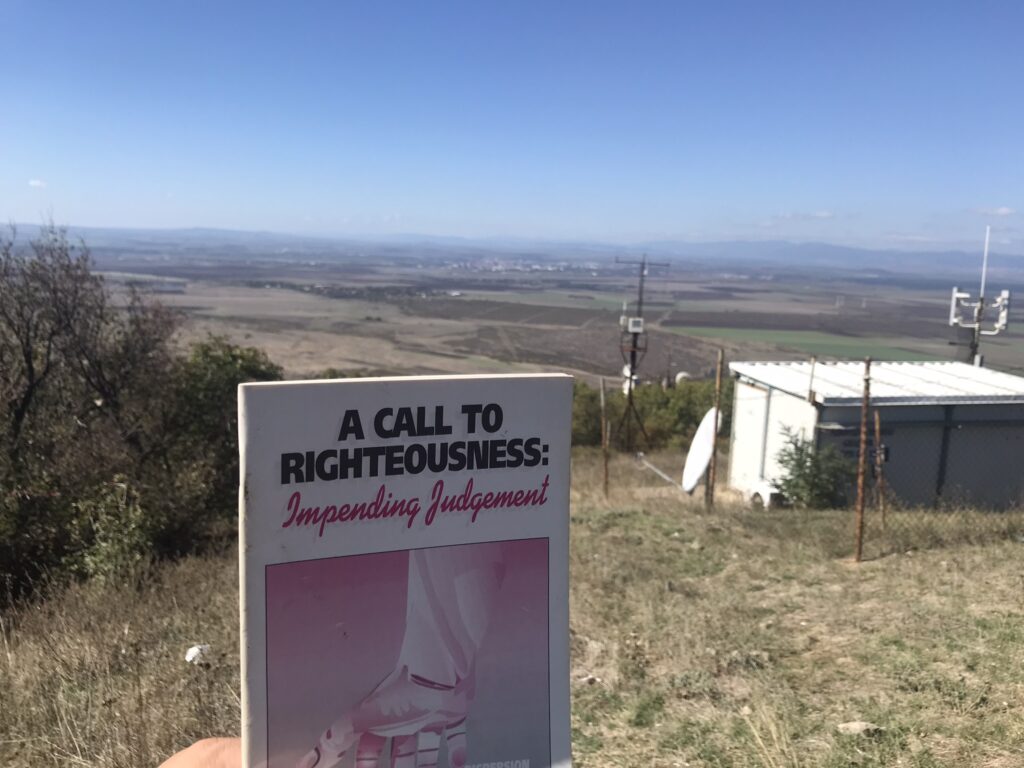
175 DAYS of REVIVAL

25 Years Southern Highroads Preacher

Dony K. Donev, D.Min., Th.D.
Now, let me spin you a tale of my first pilgrimage to Cleveland, a place nestled in the crook of the Appalachians, where the hills whisper secrets older than Methuselah’s beard. It was New Year’s Eve, 1995, when I rolled in from the wind-whipped streets of Chicago. Cold? Why, it was colder than a banker’s heart in a foreclosure! Snow? Piles of it, heaped high as a politician’s promises! Blizzardy? I reckon the Almighty Himself was shaking out His winter quilt, burying the world in flakes as big as goose feathers. I stepped out of my baby blue Grand National, shivering like a plucked chicken.
My second jaunt to these parts came in the golden autumn of 1997, when I took to the Southern Highroads Trail. If you ain’t never seen that ribbon of road in the fall, with the leaves blazing like a painter’s fever dream – reds and golds fit to shame a king’s ransom – well, you’ve missed a slice of Heaven. I’ve driven that trail so often since, my automobiles could nearabout navigate it blindfolded. There was that old Buick, a candy-apple-red 1.6 CRX, spry as a jackrabbit; a pair of Volvos, sturdy as Swedish hymns; and a Dodge that grumbled but never quit. Why, those machines know every twist and turn of that road better than I know my own signature.
It all began in earnest during my first semester at seminary, a trial that’d make Hercules himself throw up his hands and take to whittling. Picture this: a load of 26 credit hours, 13 papers to scribble (each one a literary ordeal to rival the labors of Job), 13 Sunday morning preaching appointments down in South Carolina, and a mere 12 weeks to wrestle it all into submission.
Some Sundays, I’d stand in a pulpit near Clemson, preaching three times till my throat was raw as a buzzard’s breakfast, then climb into my car and tear back up Southern Highroads that very night, the stars winking like they knew my hurry. Other times, I’d be at revivals, driving down every day and back again after we’d lingered at the altar well until midnight. The Southern Highroads became my confessor, my companion, and my taskmaster, and my trusty steeds.
My cars learned its ways by heart, carrying me through the dark. A winding path that stretched like a ribbon tossed across the hills of Appalachia, a spirited jaunt, kicking off in Clemson and sashaying through Seneca and Westminster, before hightailing it straight to Clayton, where the mountain hills stand like old philosophers. Back in those days, that South Carolina stretch was a speedster’s dream and my little CRX Si loved them curves like a fiddler loves a reel!
Nowadays, they’ve gone and fancied up the road with new bridges and turns, especially near the new resorts and golf clubs, where folks swing clubs at little white balls and call it a good time. But back then, it was wilder than the Wild West, full of twists that’d test a mountain goat’s nerve. My CRX danced through those bends leading up to Clayton in 30 minutes or less with the glee of a schoolboy let loose on a summer’s day. Now, I ain’t saying I broke all the laws of man and nature on the Southern Highroads, but I reckon that road and I had an understanding. It whispered, “Go on, son, give it a whirl!”
After crossing downtown Clayton, I pressed the pedal hard toward Hiwassee. Thirty minutes, maybe less. The road was much clearer back then. The three 10-mile-an-hour curves past the scenic view were much gentler then. Beyond them, the passing lane opened up, and the car held steady at 80, sometimes 85, for a good stretch. I once dreamed of a great white cross on the hill at Clayton’s edge. Now it stands there atop the hill, shining like a lighthouse in the night.
Hiwassee meant something to me later, not then. In the ‘90s, I passed through fast, aiming for Young Harris and Blairsville. Murphy was a place I circled around on purpose. Decades on, I learned Young Harris was Methodist, married to a Mormon woman. Back then, they were just one red light towns, brief midnight shadows on the dark no moon road, gone quick as I drove, weary from preaching all day. My 75-mile half-way point there was a green painted gas station that is now long gone. An RV dealership sits there now or maybe a repair shop.
The night always hung-over Blairsville like a cheap suit, wrinkled and heavy with the promise of trouble. I swung my car right at the fork where First Baptist now sits always bypassing Murphy. Back then, that corner was just a pumps-and-gravel affair, the kind of place where a man could fill his tank and his thoughts with nothing but the hum of crickets.
My next destination was the Big Bear gas station at Decker’s Market, a lonely outpost where the road met nothing but shadows. From there to Ducktown’s Piggly Wiggly, via the twisting snake of Wolf Creek, it is exactly 14 miles as the crow flies. This old preacher, with a Bible in one hand and a lead foot on the gas, could carve that stretch in ten minutes flat.
Time’s a thief with a mean streak. The Piggly Wiggly’s gone now, selling nothing but broken dreams instead of canned beans and green okra. Ducktown’s got itself a red light right at the front of the store, blinking red and waiting for something that ain’t coming back.
The Southern Highroads climbed and fell, a hard stretch of asphalt past the Whitewater Center, now just ashes and memory. Then it dived sharp into the Ocoee. I would be half asleep by then, eyes heavy, but my hands knew the wheel. Each turn came clear -left, right, left again – with a rhythm burning into me like an old saint’s prayer. The road didn’t care about the years or the sermons I’d preached. It just stretched on, leading me through the ghosts of shadows laying over the white waters of the Ocoee and toward a horizon that always seemed one turn away. Until the last turn by the dam and into the four-lane leading into ol’ Cleveland.
Now, I ain’t no hero, mind you, just a fellow, preaching His Word and rattling along them Southern Highroads like a pilgrim with a cause for over a quarter century now. But if you ever find yourself in Cleveland on a snowy New Year’s Eve or a crisp fall day, take a drive on that Southern Highroads trail. And you’ll see why my cars, bless their iron souls, never forgot the way.
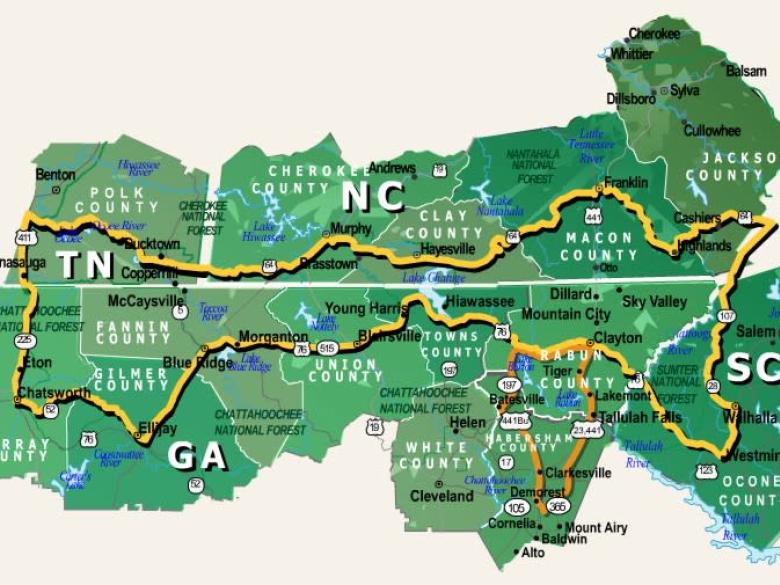
Moscow Hit by Ukrainian Drones
Ukraine has unleashed what was reportedly the heaviest drone attack so far against Moscow. The overnight raid on the Russian capital killed at least one person and caused significant damage and disruption. As is typical for Ukrainian attacks of this kind on targets in Russian territory, there was no immediate comment from Kyiv. Russian officials, however, responded angrily, accusing Ukraine of deliberately attacking civilian areas.
One of Putin’s slaves goes to film herself watching Ukrainian drones pour onto Moscow. pic.twitter.com/rtZob2gplv
— Jay in Kyiv (@JayinKyiv) September 10, 2024
In all, Russia claims that it brought down at least 20 Ukrainian drones over the Moscow region, and 124 more over eight other regions. While these claims cannot be independently verified, available videos posted to social media make clear the fact that this was a significant and sustained attack, with the Moscow region being particularly heavily hit.
At least one person, a 46-year-old woman, was killed in Ramenskoye, near Moscow, according to Russian authorities, when fire engulfed a high-rise residential building, leaving another three people wounded, according to regional governor Andrei Vorobyov. Meanwhile, 43 people were evacuated to temporary accommodation centers. “Dozens” of homes in the region were reportedly hit.
Several videos show, from very close quarters, a drone impacting a Moscow high-rise building, although it’s unclear if this is the same one that was struck in Ramenskoye.
First Day of School in Bulgaria
A Call to Stand Against Demonic Works
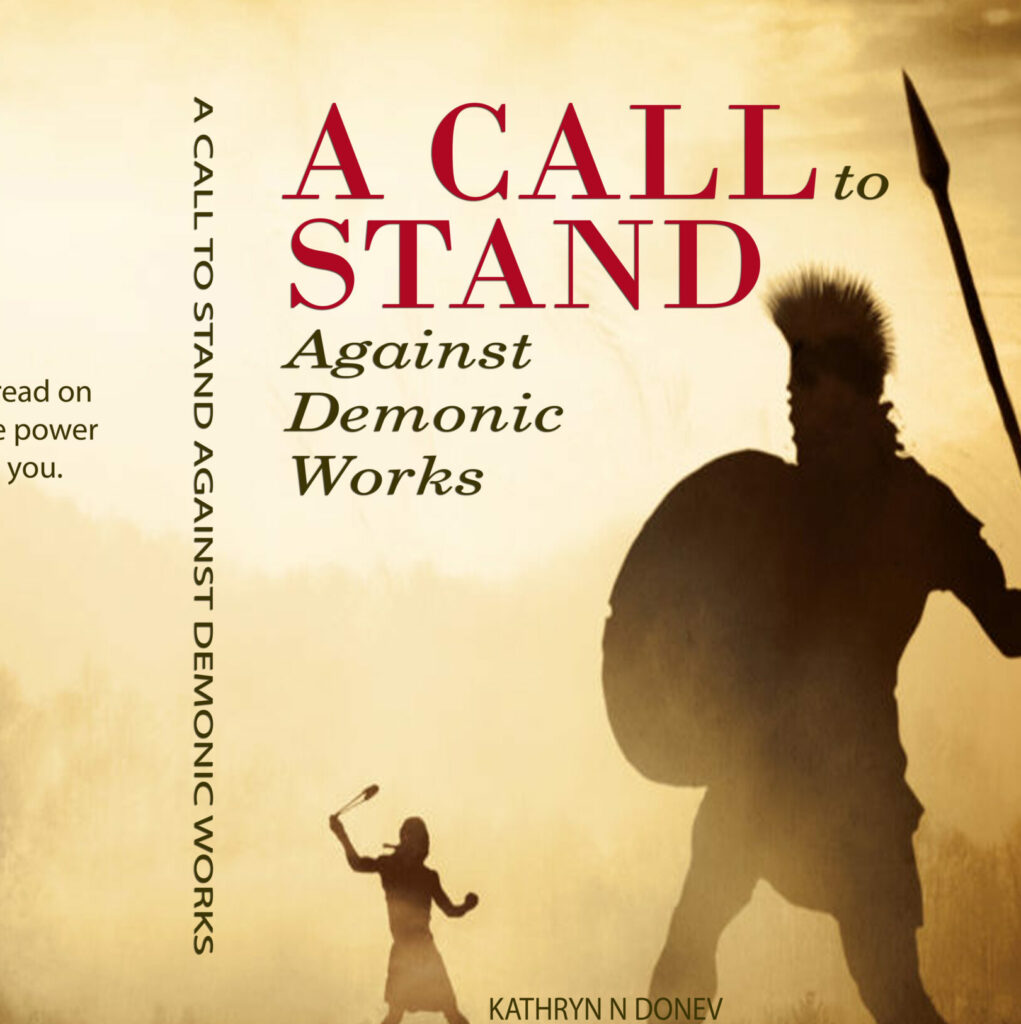
Read more here: A CALL
150 DAYS of REVIVAL
September 1, 2024 by Cup&Cross
Filed under Featured, Missions, News, Publication

A Call to Righteousness over Bulgaria
